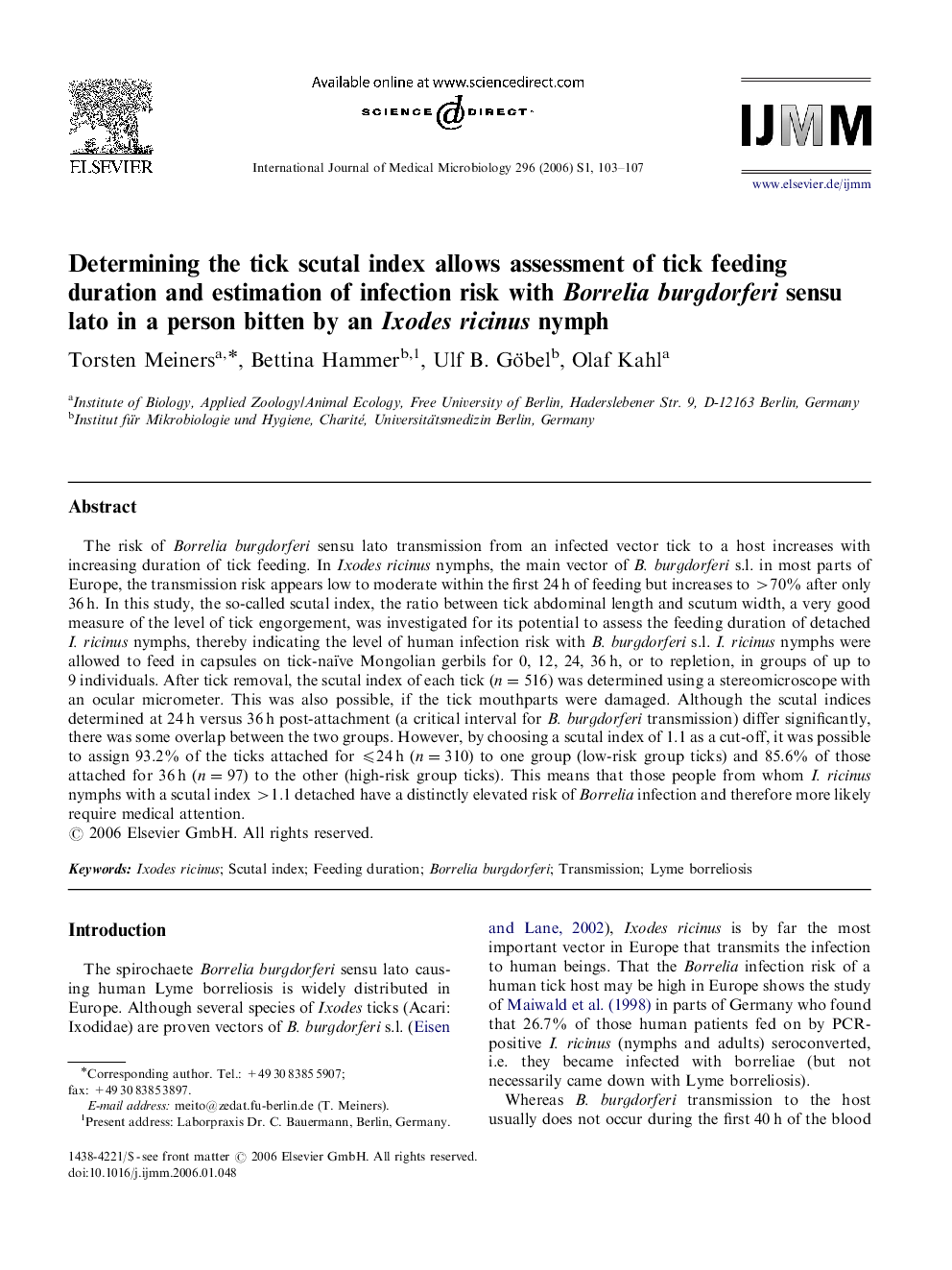| Article ID | Journal | Published Year | Pages | File Type |
|---|---|---|---|---|
| 2055077 | International Journal of Medical Microbiology | 2006 | 5 Pages |
The risk of Borrelia burgdorferi sensu lato transmission from an infected vector tick to a host increases with increasing duration of tick feeding. In Ixodes ricinus nymphs, the main vector of B. burgdorferi s.l. in most parts of Europe, the transmission risk appears low to moderate within the first 24 h of feeding but increases to >70% after only 36 h. In this study, the so-called scutal index, the ratio between tick abdominal length and scutum width, a very good measure of the level of tick engorgement, was investigated for its potential to assess the feeding duration of detached I. ricinus nymphs, thereby indicating the level of human infection risk with B. burgdorferi s.l. I. ricinus nymphs were allowed to feed in capsules on tick-naïve Mongolian gerbils for 0, 12, 24, 36 h, or to repletion, in groups of up to 9 individuals. After tick removal, the scutal index of each tick (n=516n=516) was determined using a stereomicroscope with an ocular micrometer. This was also possible, if the tick mouthparts were damaged. Although the scutal indices determined at 24 h versus 36 h post-attachment (a critical interval for B. burgdorferi transmission) differ significantly, there was some overlap between the two groups. However, by choosing a scutal index of 1.1 as a cut-off, it was possible to assign 93.2% of the ticks attached for ⩽24 h (n=310n=310) to one group (low-risk group ticks) and 85.6% of those attached for 36 h (n=97n=97) to the other (high-risk group ticks). This means that those people from whom I. ricinus nymphs with a scutal index >1.1 detached have a distinctly elevated risk of Borrelia infection and therefore more likely require medical attention.
